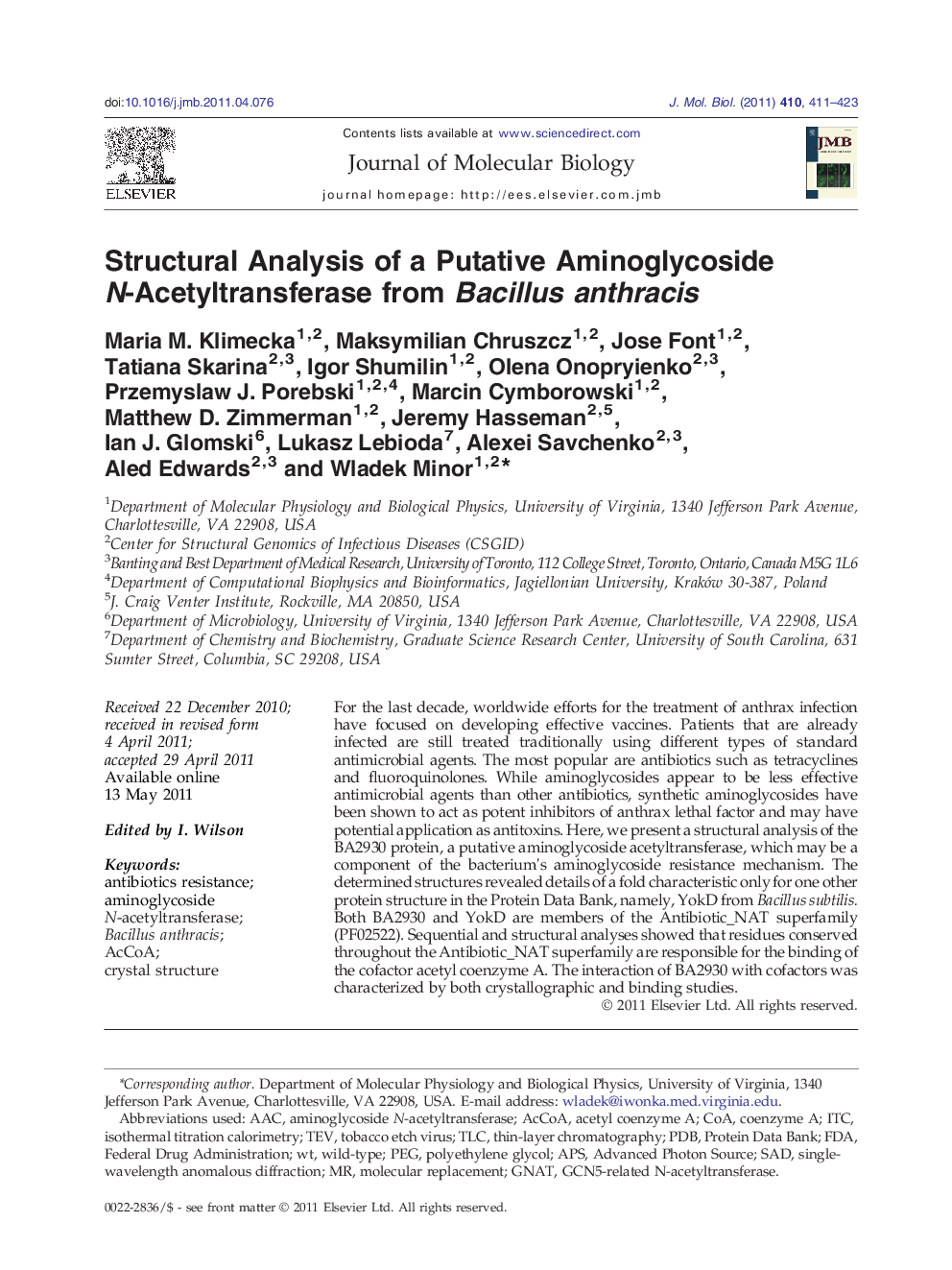| Article ID | Journal | Published Year | Pages | File Type |
|---|---|---|---|---|
| 2185127 | Journal of Molecular Biology | 2011 | 13 Pages |
For the last decade, worldwide efforts for the treatment of anthrax infection have focused on developing effective vaccines. Patients that are already infected are still treated traditionally using different types of standard antimicrobial agents. The most popular are antibiotics such as tetracyclines and fluoroquinolones. While aminoglycosides appear to be less effective antimicrobial agents than other antibiotics, synthetic aminoglycosides have been shown to act as potent inhibitors of anthrax lethal factor and may have potential application as antitoxins. Here, we present a structural analysis of the BA2930 protein, a putative aminoglycoside acetyltransferase, which may be a component of the bacterium's aminoglycoside resistance mechanism. The determined structures revealed details of a fold characteristic only for one other protein structure in the Protein Data Bank, namely, YokD from Bacillus subtilis. Both BA2930 and YokD are members of the Antibiotic_NAT superfamily (PF02522). Sequential and structural analyses showed that residues conserved throughout the Antibiotic_NAT superfamily are responsible for the binding of the cofactor acetyl coenzyme A. The interaction of BA2930 with cofactors was characterized by both crystallographic and binding studies.
Graphical AbstractFigure optionsDownload full-size imageDownload high-quality image (136 K)Download as PowerPoint slide
